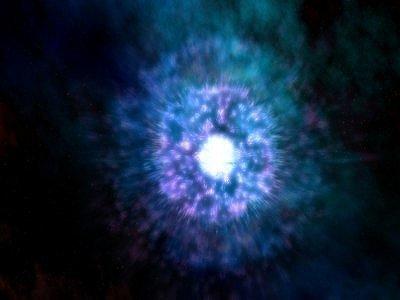NOVA
Season 1
s01e01 / The Making Of A Natural History Film
4th Mar '74 - 1:00am
NOVA premieres on public television with a behind-the-scenes look at the making of a nature film. Oxford Scientific Films Unit shows how it tackles such problems as filming a wood-wasp laying its egg inside trees, the hatching of a chick and the courtship rituals of the stickleback.
s01e02 / Where Did The Colorado Go?
11th Mar '74 - 1:00am
NOVA explores the mighty Colorado River which today has become the life-blood of the Southwest, providing water and electricity to the farms and cities of California, Nevada, and Arizona. The program examines the political expediency and technological over-optimism that has led to some major miscalculations of the river's capacity.
s01e03 / Whales, Dolphins, And Men
18th Mar '74 - 1:00am
NOVA explores the impact of whaling and the goods it produces for the industry, verses the grace and beatury of this intelligent mammal of the sea.
s01e04 / The Search For Life
25th Mar '74 - 1:00am
Does life exist outside this planet? The Viking lander will set down on Mars in July 1976 to try to find out just that. NOVA explores how life started on Earth and examines the Viking Lander being built in its germ-free room before starting its long journey.
s01e05 / Last Of The Cuiva
1st Apr '74 - 1:00am
How does a primitive nomadic tribe of the Amazon basin cope with the encroachment of Western settlers? NOVA looks at both sides of the story, revealing the misunderstandings between the two cultures.
s01e06 / Strange Sleep
8th Apr '74 - 1:00am
Medicine was transformed in the 19th century by the discovery of anesthesia; surgery, until then hasty, bloody and completely unable to deal with internal disorders, subsequently took its place in the front rank of medical practice. This NOVA docudrama depicts the pioneers of medicine.
s01e07 / The Crab Nebula
15th Apr '74 - 1:00am
In 1054 AD, the Chinese recorded the explosion of a star so bright that it lit the sky for three weeks, even during the day. It was the explosion of a dying star that was bigger than our sun. NOVA explores this mysterious explosion that led to the discovery of Crab Nebula.
s01e08 / Bird Brain: The Mystery Of Bird Navigation
22nd Apr '74 - 1:00am
Birds migrate in search of perpetual summer, sometimes traveling as much as 20,000 miles every year. NOVA uses radar to track and identify migrating birds that travel at night, focusing on how they coose routes tat avoid bad weather and make the best of prevailing winds-information that can aid meteorologists.
s01e09 / Are You Doing This For Me, Doctor?
29th Apr '74 - 1:00am
The advance of medicine depends inevitably on the testing of experimental procedures on human volunteers from either the healthy or the sick. Yet such procedures are often dangerous, and may not be of direct benefit to the subject. NOVA examines how individuals' interests are safeguarded, and asks, under what circumstances experiments should be conducted on children.
s01e10 / The First Signs Of Washoe
6th May '74 - 1:00am
Washoe is a chimp more like a person: she talks with her hands. NOVA visits with Washoe and her teachers-Professor Allen Gardner and Dr. Trixie Gardner-to learn more about this unusual animal.
s01e11 / The Case Of The Midwife Toad
13th May '74 - 1:00am
When Paul Kammerer committed sleeping in 1926, it was taken by most of his fellow biologists as a tacit admission of guilt that he had faked his experiments purporting to show the inheritance of acquired characteristics. Arthur Koestler joins NOVA in an in-depth examination of Kammerer's infamous experiment.
s01e12 / Fusion: The Energy Of Promise
20th May '74 - 1:00am
Nuclear fusion offers the promises of an unlimited, clean source of energy. But achieving fusion has proved one of the most difficult and elusive goals of the physicist. NOVA tells the story of the twists and turns and the international competition along the road toward the achievement of fusion; and details the recent breakthroughs which seem at last to have brought it within reach.
s01e13 / The Mystery Of The Anasazi
27th May '74 - 1:00am
Who were the people that built the first cities - complete with apartment blocks - in North America? They were the Anasazi Indians, who lived in the Southwest for some eight or nine thousand years and who then, in about 1300 AD, abruptly abandoned their cities and apparently disappeared. NOVA traces the steps of this ancient sophisticated culture.
- View Season 1 Episodes
- View Season 2 Episodes
- View Season 3 Episodes
- View Season 4 Episodes
- View Season 5 Episodes
- View Season 6 Episodes
- View Season 7 Episodes
- View Season 8 Episodes
- View Season 9 Episodes
- View Season 10 Episodes
- View Season 11 Episodes
- View Season 12 Episodes
- View Season 13 Episodes
- View Season 14 Episodes
- View Season 15 Episodes
- View Season 16 Episodes
- View Season 17 Episodes
- View Season 18 Episodes
- View Season 19 Episodes
- View Season 20 Episodes
- View Season 21 Episodes
- View Season 22 Episodes
- View Season 23 Episodes
- View Season 24 Episodes
- View Season 25 Episodes
- View Season 26 Episodes
- View Season 27 Episodes
- View Season 28 Episodes
- View Season 29 Episodes
- View Season 30 Episodes
- View Season 31 Episodes
- View Season 32 Episodes
- View Season 33 Episodes
- View Season 34 Episodes
- View Season 35 Episodes
- View Season 36 Episodes
- View Season 37 Episodes
- View Season 38 Episodes
- View Season 39 Episodes
- View Season 40 Episodes
- View Season 41 Episodes
- View Season 42 Episodes
- View Season 43 Episodes
- View Season 44 Episodes
- View Season 45 Episodes